Analytics Kit predefines rich analysis models to help you easily understand user behavior and gain in-depth insights into users, products, and content. As such, you can carry out data-driven operations and make informed decisions about app marketing and product optimization.
Analytics Kit implements the following functions using data collected from apps:
In this codelab, you will create a demo app based on the provided demo project. After creating a demo app, you will be able to:
In this codelab, you will learn how to:
To integrate Analytics Kit, you must complete the following preparations:
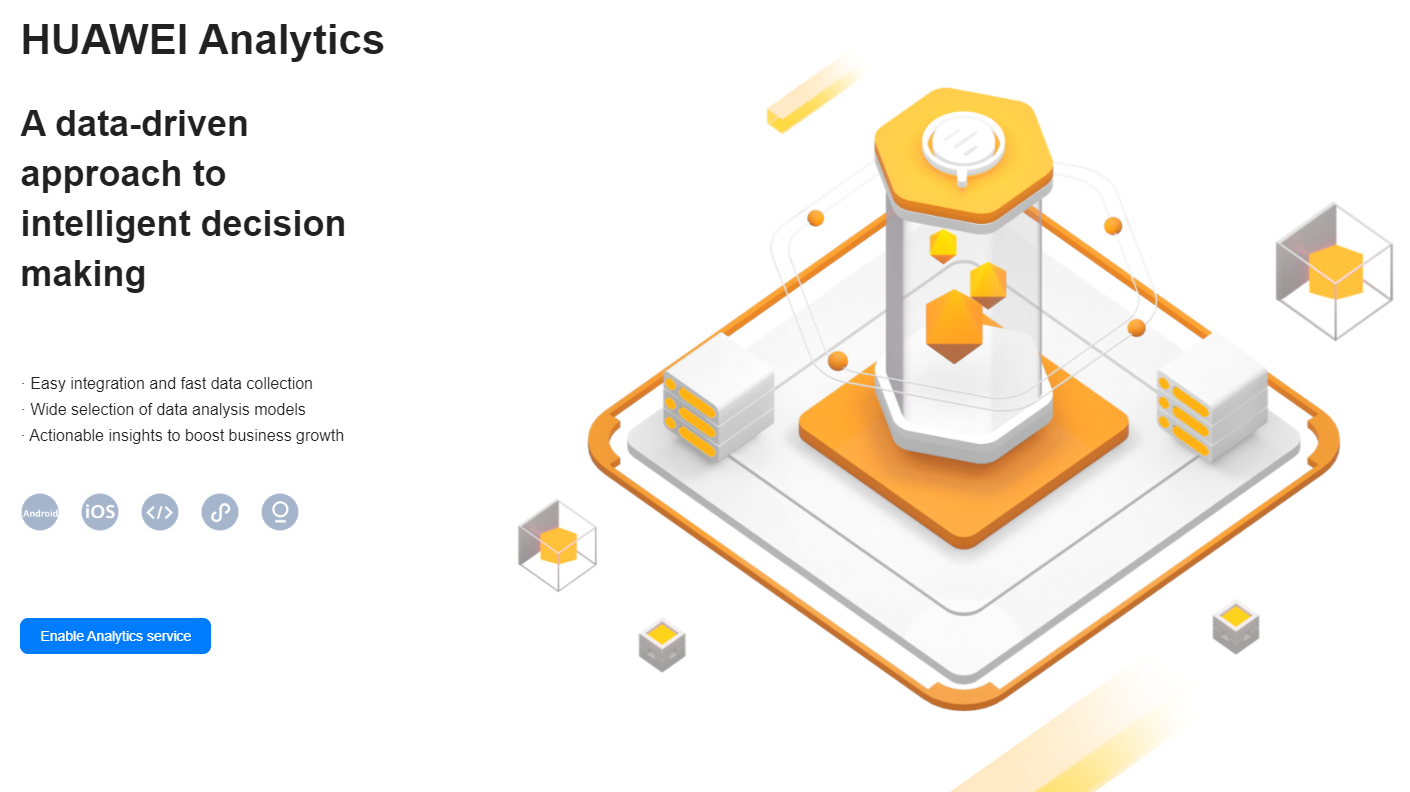
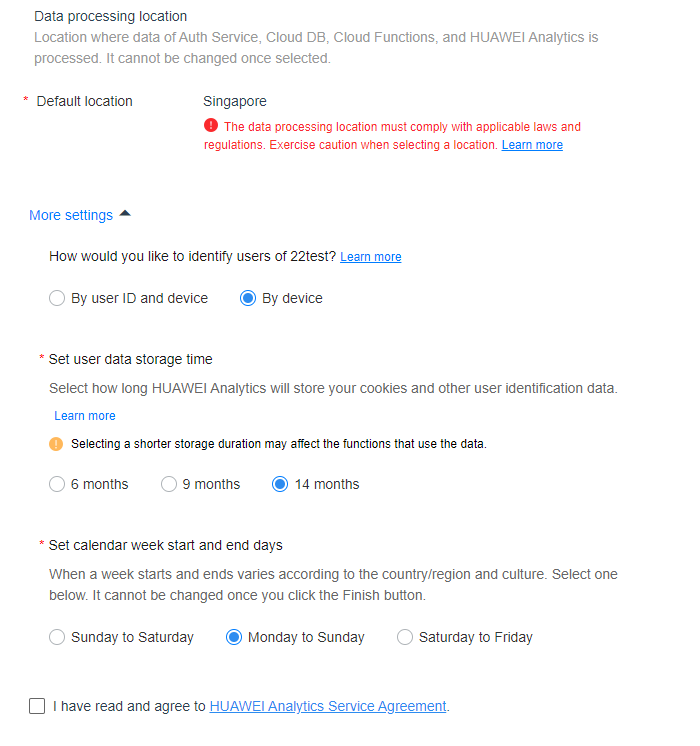
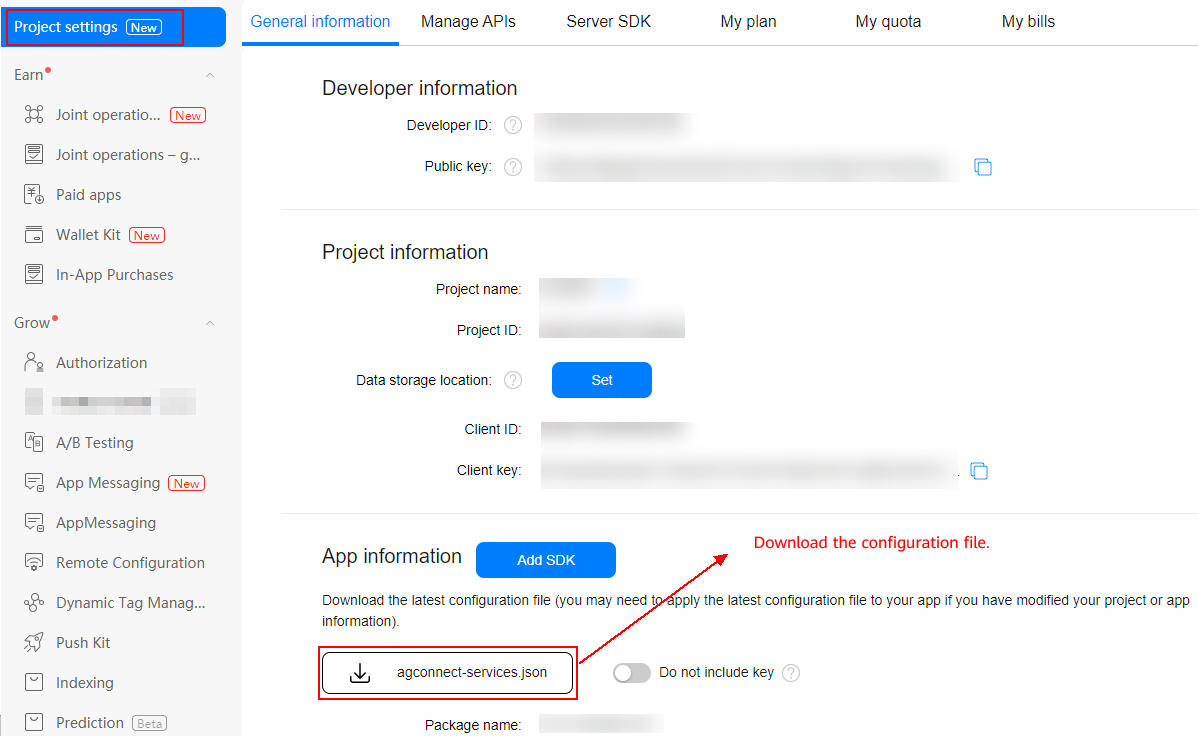
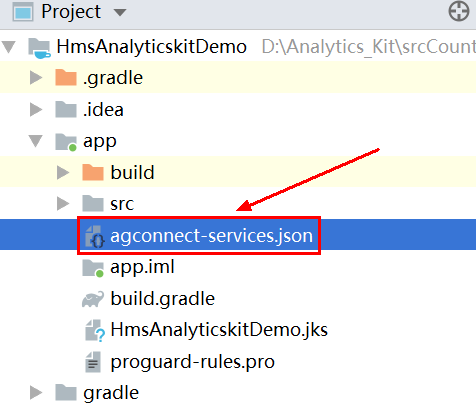
a) Open the project-level build.gradle file.
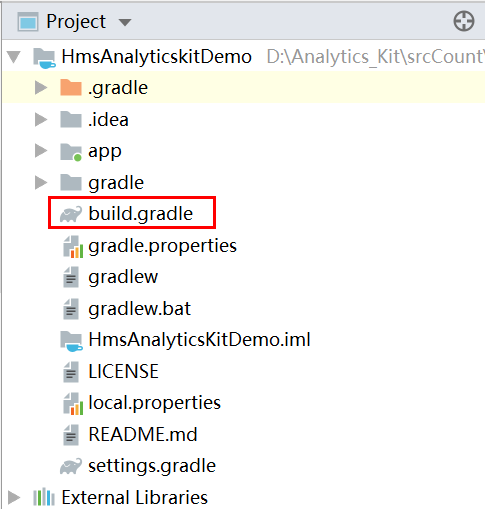
b) Configure the Maven repository address for the HMS Core SDK.
For details, please refer to Configuring the Maven Repository Address for the HMS Core SDK.
c) Add the AppGallery Connect dependency to dependencies.
dependencies {
classpath 'com.huawei.agconnect:agcp:1.6.0.300'
}
a) Open the app-level build.gradle file.
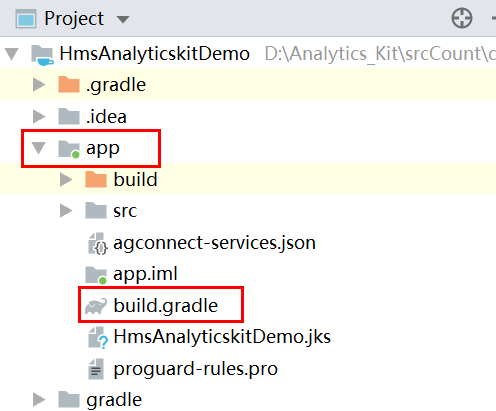
b) Add the build dependency to dependencies.
dependencies {
implementation 'com.huawei.hms:hianalytics:6.7.0.300'
}
c)Add the AppGallery Connect plugin configuration.
Method 1: add the following information under apply plugin: 'com.android.application' in the file header:
apply plugin: 'com.huawei.agconnect'Method 2: add the plugin configuration to the plugins block:
plugins {
id 'com.android.application'
// Add the following configuration:
id 'com.huawei.agconnect'
}

1. Open the app-level obfuscation configuration file proguard-rules.pro of your project and add configurations to exclude the HMS Core SDK from obfuscation.
-ignorewarnings
-keepattributes *Annotation*
-keepattributes Exceptions
-keepattributes InnerClasses
-keepattributes Signature
-keepattributes SourceFile,LineNumberTable
-keep class com.huawei.hianalytics.**{*;}
-keep class com.huawei.updatesdk.**{*;}
-keep class com.huawei.hms.**{*;}
2. If you are using AndResGuard, add its trustlist to the obfuscation configuration file.
"R.string.hms*",
"R.string.connect_server_fail_prompt_toast",
"R.string.getting_message_fail_prompt_toast",
"R.string.no_available_network_prompt_toast",
"R.string.third_app_*",
"R.string.upsdk_*",
"R.layout.hms*",
"R.layout.upsdk_*",
"R.drawable.upsdk*",
"R.color.upsdk*",
"R.dimen.upsdk*",
"R.style.upsdk*",
"R.string.agc*"
In this section, you will try to build a demo with the question answering function to learn how to use the main APIs of Analytics Kit. We have prepared the code for you, meaning you only need to follow the instructions in each step below to learn how to use Analytics Kit to report the events you are interested in, such as answering questions, calculating scores, and setting user attributes.
Copy all Java files from the code directory to your project.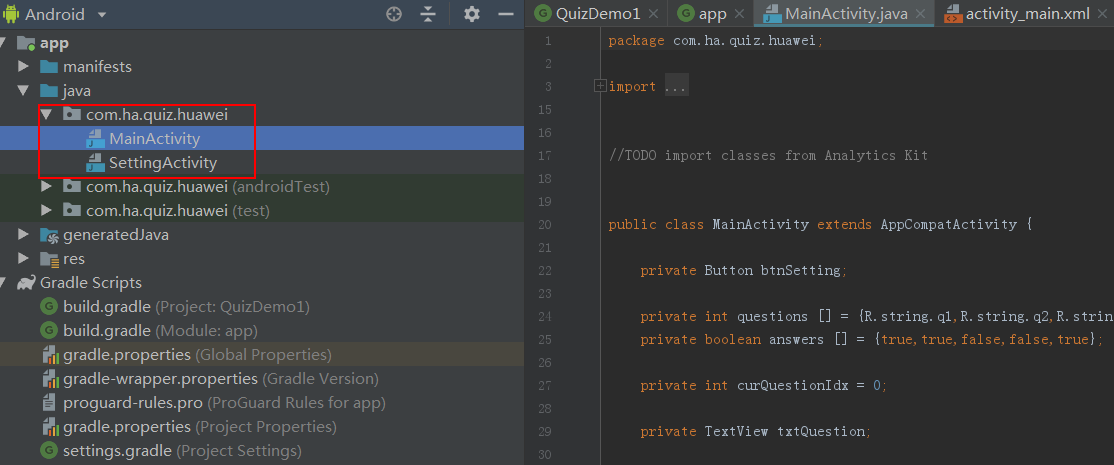
Copy all resource files from the res directory to your project.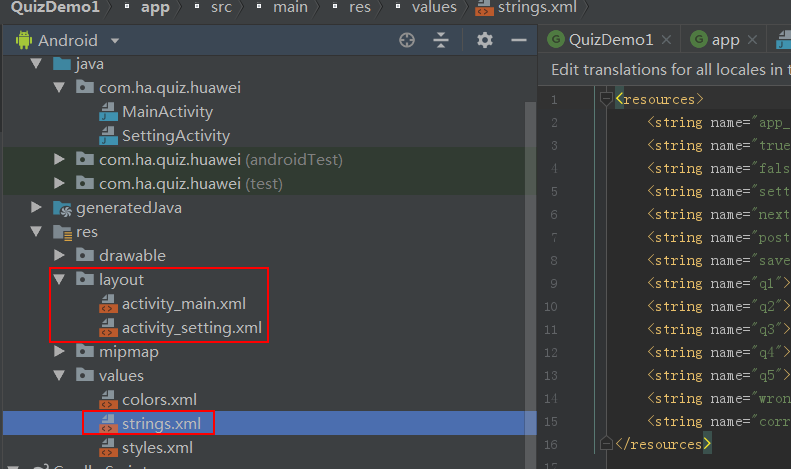
<application
......
<meta-data
android:name="install_channel"
android:value="AppGallery">
</meta-data>
......
</application><application
<activity> android:name=".SettingActivity">
</activity>
</application>
Your app is so far loaded with the required functions. Next, you will use Analytics Kit to report the events that interest you.
// TODO: Import classes from Analytics Kit.
import com.huawei.hms.analytics.HiAnalytics;
import com.huawei.hms.analytics.HiAnalyticsInstance;
import com.huawei.hms.analytics.HiAnalyticsTools;
import static com.huawei.hms.analytics.type.HAEventType.*;
import static com.huawei.hms.analytics.type.HAParamType.*;
private int score = 0;
// TODO: Define a variable for the Analytics Kit instance.
HiAnalyticsInstance instance;
@Override
protected void onCreate(Bundle savedInstanceState) {
super.onCreate(savedInstanceState);
setContentView(R.layout.activity_main);
// TODO: Initialize Analytics Kit.
// Enable Analytics Kit logging.
HiAnalyticsTools.enableLog();
// Generate an Analytics Kit instance.
instance = HiAnalytics.getInstance(this);
txtQuestion = (TextView)findViewById(R.id.question_text_view);
txtQuestion.setText(questions[curQuestionIdx]);
}
private void reportAnswerEvt(String answer) {
// TODO: Report a custom event.
// Event name: Answer
// Event parameters:
// -- question: String
// -- answer: String
// -- answerTime: String
// Initialize parameters.
Bundle bundle = new Bundle();
bundle.putString("question", txtQuestion.getText().toString().trim());
bundle.putString("answer",answer);
SimpleDateFormat sdf = new SimpleDateFormat("yyyy-MM-dd HH:mm:ss", Locale.ENGLISH);
bundle.putString("answerTime",sdf.format(new Date()));
// Report a custom event.
instance.onEvent("Answer", bundle);
}
private void postScore() {
// TODO: Report a score through the SUBMITSCORE event.
// Initialize parameters.
Bundle bundle = new Bundle();
bundle.putLong(SCORE, score);
// Report a predefined event.
instance.onEvent(SUBMITSCORE, bundle);
}
// TODO: Import classes from Analytics Kit.
import com.huawei.hms.analytics.HiAnalytics;
import com.huawei.hms.analytics.HiAnalyticsInstance;
// TODO: Define a variable for the Analytics Kit instance.
HiAnalyticsInstance instance;
// TODO: Generate an Analytics Kit instance.
instance = HiAnalytics.getInstance(this);
btnSave.setOnClickListener(new View.OnClickListener() {
@Override
public void onClick(View view) {
editFavorSport = (EditText)findViewById(R.id.edit_favorite_sport);
// TODO: Set users' favorite sport using the setUserProfile API.
instance.setUserProfile("favor_sport",strFavorSport);
}
});
For details about APIs, please refer to the Analytics Kit API Reference.
Start the app in the emulator and trigger event reporting as instructed.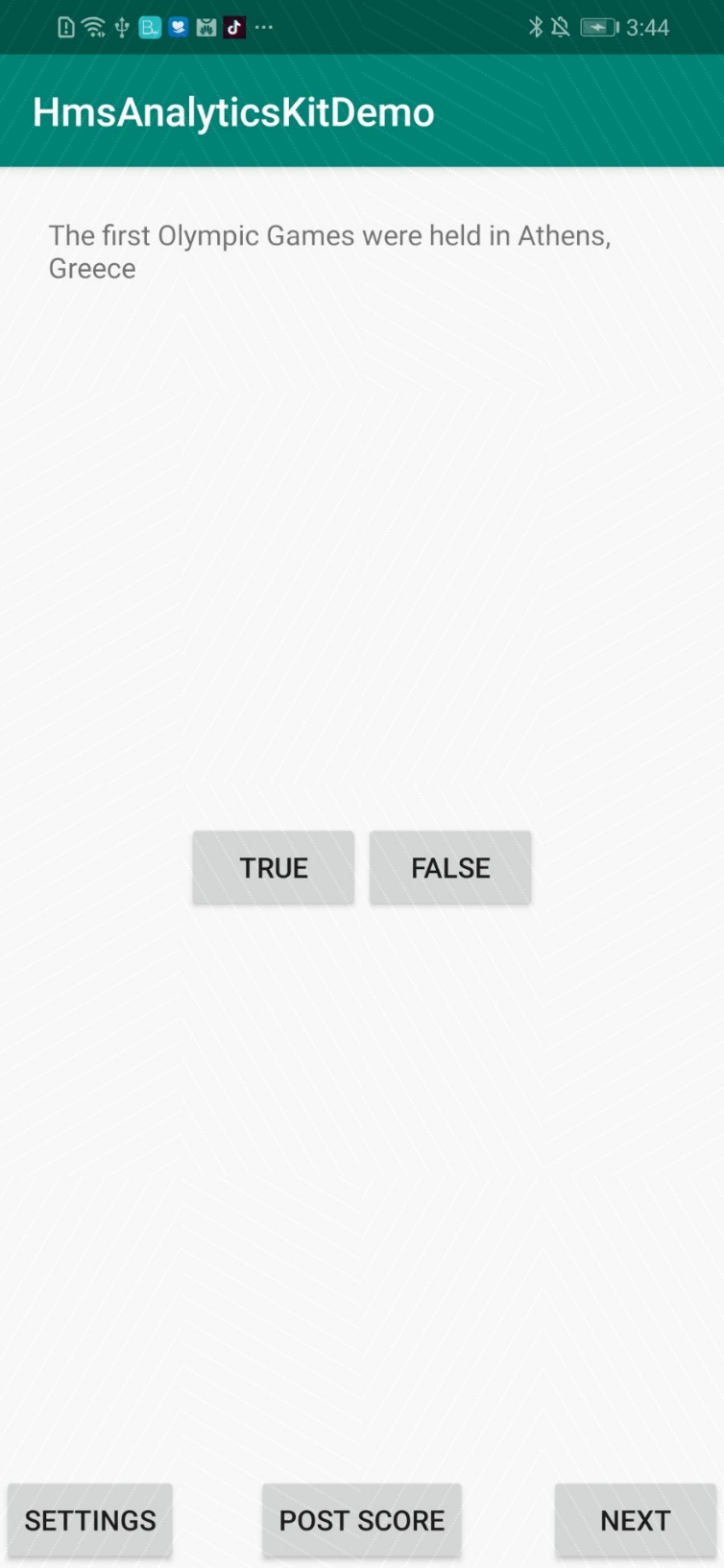
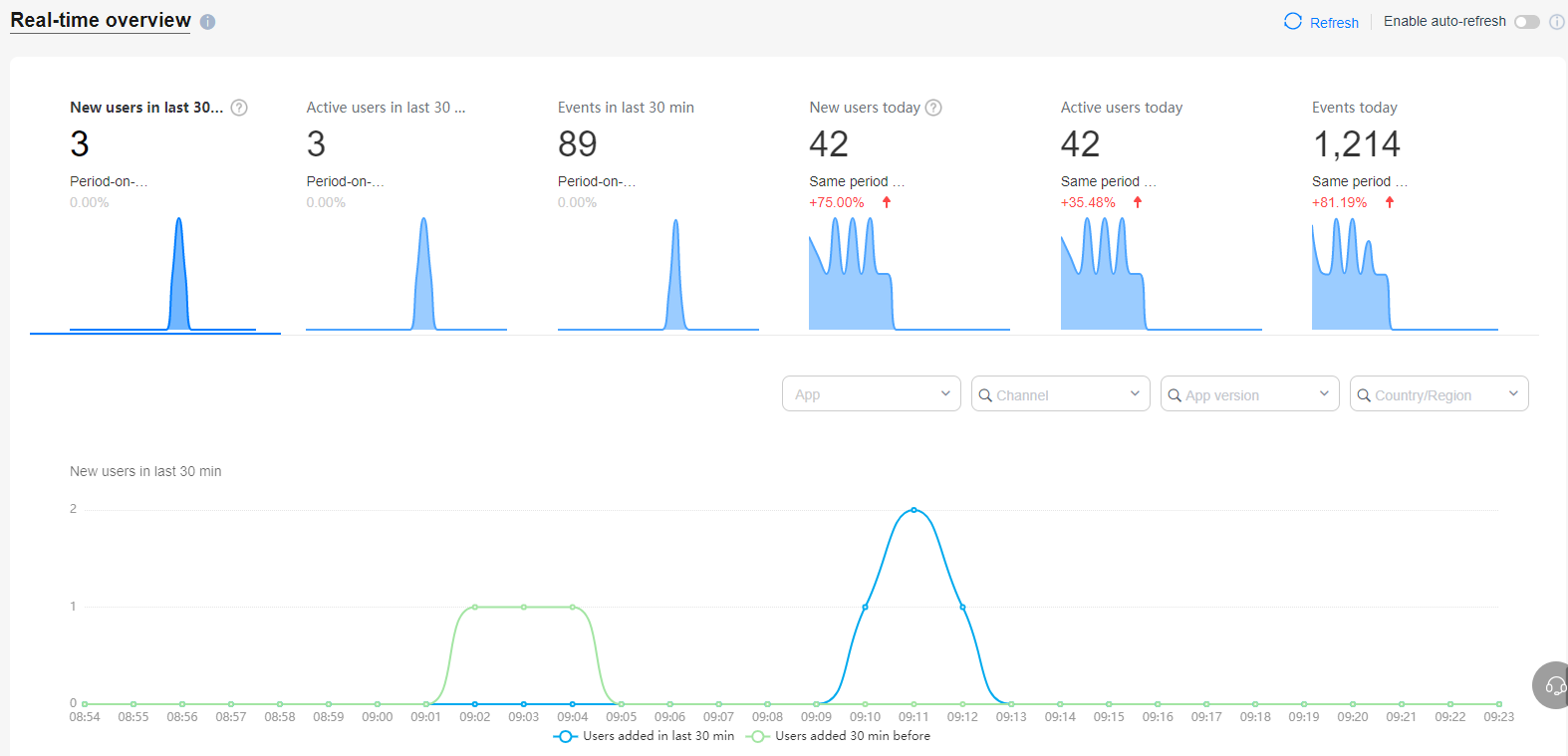
adb shell setprop debug.huawei.hms.analytics.app <package_name>After the debug mode is enabled, all triggered events are reported to the App debugging page in real time.
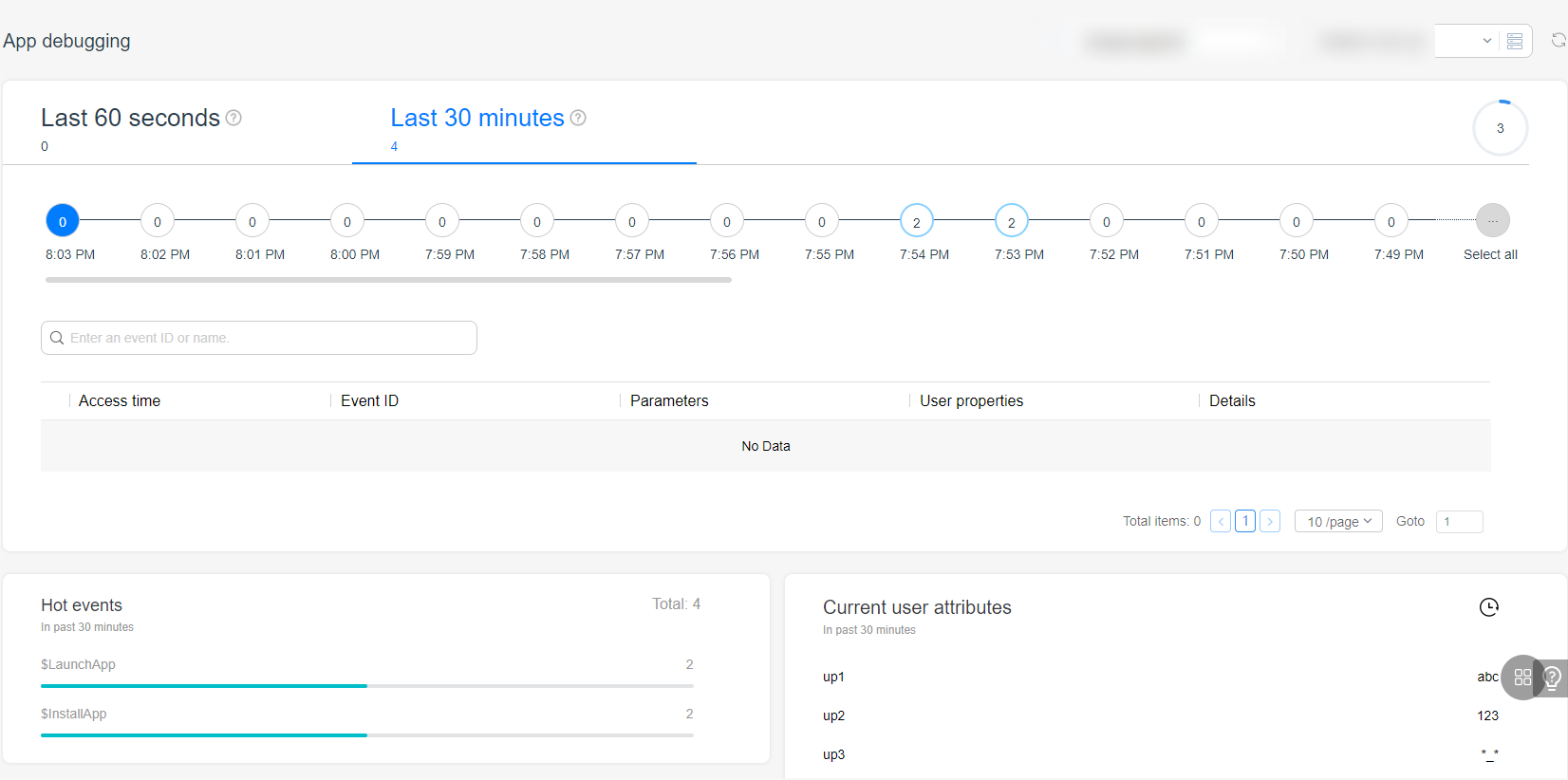
To disable the debug mode, run the following command:
adb shell setprop debug.huawei.hms.analytics.app .none.Initialize Analytics Kit in the main thread by using the onCreate() method of the first app activity. Otherwise, the processing of automatically collected lifecycle events may be affected.
Analytics Kit identifies users through an Anonymous Application ID (AAID).
The AAID will be reset in the following scenarios:
Analytics Kit requires the following permissions, which have been preset in Analytics Kit. You do not need to apply for these permissions.
This error may occur if the Gradle version configured in the sample code of Analytics Kit is later than the one you currently use. To correct the error, you are advised to change the Gradle version to an earlier version, for example, gradle-4.10.2-all.
Well done. You have successfully completed this codelab and learned how to:
For more information, please click the following link:
Related documents
To download the sample code, please click the button below: